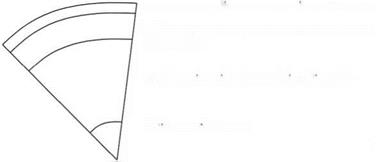Electrons (very small sub-atomic particles) are therefore the fundamental cause of molecular attractions. These were the first elementary particles to be
discovered, identified, and measured, for example in the classic experiments of J. J. Thomson more than a century ago. It was evident from those studies that an electron is much smaller than an atom, almost 2000 times less massive than a hydrogen atom. We can therefore view molecular adhesion as the bringing together of electron clouds. The other fundamental particles (the proton and neutron) were found later, as the model of the atomic nucleus was developed. They stick together in an entirely different way.
 It was apparent that in the nuclei of all the elements there exists a bunch of protons and neutrons sticking together. This adhesion of the nuclear particles has been theoretically defined in terms of the strong interaction, one of the three distinct forces in nature. The strong nuclear force hold the protons and neutrons together. This strong nuclear adhesive force plays no part in molecular adhesion, which we know to be dominated by the second force, electromagnetic interaction. Finally, the third force of nature is gravitation, which is too weak to account for molecular adhesion.
It was apparent that in the nuclei of all the elements there exists a bunch of protons and neutrons sticking together. This adhesion of the nuclear particles has been theoretically defined in terms of the strong interaction, one of the three distinct forces in nature. The strong nuclear force hold the protons and neutrons together. This strong nuclear adhesive force plays no part in molecular adhesion, which we know to be dominated by the second force, electromagnetic interaction. Finally, the third force of nature is gravitation, which is too weak to account for molecular adhesion.
The simplest way to view the three forces of nature is in terms of density. Newton’s weak gravitational force dominates our Solar System where the average density is around 10“10kgm-3. On Earth, where the density is about 10(H) kg m electromagnetic forces are dominant and these are the main topic of this book. However, in the densest stellar objects, neutron stars, the strong force is dominant because the density is that of nuclear particles, around 1017 kg m-3. The adhesion between such particles must be immense.
Although this strong adhesion between nuclear particles is not evident on Earth, except within atomic nuclei, it controls neutron stars, which were originally proposed as a theoretical idea in 1934.13 This was not supported by experimental observations until the pulsars were discovered in 1967.14 These seemed to be rotating neutron stars, a concept which is accepted today. A neutron star has a mass around. о 10 11 kg and a radius near 10 km, leading to the huge density mentioned above. The star is compressed by the large gravitational
External crust; solid mass of nuclei in sea of electrons
Internal crust; solid mass of nuclei in sea of electrons and neutrons
Neutron fluid region where nuclei are dissolved
Solid core of nucleons
Fig. 2.8. Schematic diagram of the structure of a neutron star.
attraction of the mass and is supported by the outward thrust of the neutrons, to give the structure shown in Fig. 2.8.
Because of the variety of these forces acting in the universe, it is rather important to define molecular adhesion in a careful and simple way so that there is no confusion between the three known forces: strong nuclear, electromagnetic, and gravitational.
 30 августа, 2015
30 августа, 2015  Pokraskin
Pokraskin  Опубликовано в рубрике
Опубликовано в рубрике 